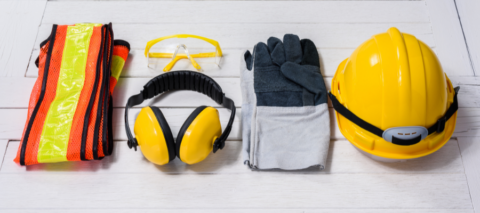Sight is one of our most valuable senses — especially when it comes to getting our jobs done right. However, sometimes the workplace can put this precious asset at risk. Each day, more than 2,000 American workers suffer an eye injury, and nearly one million Americans have lost some of their sight due to a work-related eye injury. All it takes is a particle of dust, a piece of metal, or a splash of a chemical substance to cause a serious — and maybe even permanent — eye injury. March is Workplace Eye Wellness Month, so let’s take time to review some facts about work-related eye injuries and tips on how to prevent them.
Studies show that 800,000+ Americans suffer work-related eye injuries each year. Of this number, close to 35,000 Americans require time off from work, according to a study by the U.S. Department of Labor. It is estimated that eye injuries total more than $300 million a year in lost production time, medical expenses, and workers’ compensation.
One of the easiest and most effective ways to reduce workplace eye injuries is to wear proper safety eyewear. According to a Bureau of Labor Statistics (BLS) survey, nearly three out of five people suffering eye injuries at work were wearing no protection at all. Not only do we need to wear our eye gear, but we need to make sure they fit properly. Your safety glasses or goggles should not be too loose, too tight, or crooked, and if they are, be sure to adjust them accordingly.
Whether your job requires the use of heavy machinery or dangerous chemicals, safety glasses or goggles are a must. In fact, the Occupational Safety and Health Administration (OSHA) has an eye and face protection standard that states that affected employees should use “appropriate eye or face protection when exposed to eye or face hazards from flying particles, molten metal, liquid chemicals, acids or caustic liquids, chemical gases or vapors, or potentially injurious light radiation.” Safety eyewear varies depending upon the type of work being done, but the general rule is that anyone passing through a worksite should wear protective eyewear to avoid injuries caused by flying objects, tools, particles, chemicals, and other hazards.
If you work in the production, transportation, or service industry, you are at greater risk of an eye injury. These types of industries have worksites where flying tools, dust particles, slivers of metal, hazardous chemicals, and other eye-harming substances are present. If this describes your work environment, you especially need to be cautious and aware of potential eye hazards and follow the rules as it pertains to eye safety.
When it comes to eyewear on the job site, not just any glasses or goggles will do. All eye protection should be certified by the American National Standards Institute (ANSI) as ANSI Z87, and this should be clearly marked on all protective eyewear. OSHA requires employers to ensure that all workers have the suitable and required eye protection.
Accidental hazardous exposures can still occur even when the proper eye safety precautions are being taken. If an accident should occur, the first 10 to 15 seconds after exposure to a dangerous substance are critical. Delaying treatment may cause significant injury, even if it’s just for a few seconds. Emergency eyewash stations provide on-the-spot decontamination and allow workers to flush away these hazardous substances and to minimize the effects of them. This is why it is of utmost importance that all employees know where the nearest eyewash station is located and how to properly use it.
A key step in preserving an employee’s eyesight is to have his or her eyes examined at least once a year. Eye exams will help evaluate potential unseen injuries to the eye as well as look for signs of serious eye conditions. Making sure you have quality vision — and correcting it if needed — will assist you in doing your job as safely as possible.
In 2007, OSHA ruled that employers must pay for employees’ prescription safety glasses when they mandate that the protection remains on company property. There are also other options in lieu of prescription safety glasses that can be provided by the employer such as goggles that allow corrective lenses to be placed behind the goggle lenses or that employees can wear over their eyeglasses. Be sure to inform your employer if you are in need of a special form of protective eyewear due to impaired vision.
Although we are in the business of treating work-related injuries, we believe that prevention is always better than the cure. In honor of Workplace Eye Wellness Month, let’s be extra cautious when it comes to on-the-job eye hazards and wear the proper protective eye gear. If an eye injury were to occur at the worksite, you know who to call.
MOBILE CLINIC
DIRECT: 251.436.8039
CELL: 251.751.9282
OFFICE: 251.434.6770
EMAIL: ddaniel@occupationalhc.com
PASCAGOULA CLINIC
OFFICE: (228) 762-4642 or (228) 762-4OHC
EMAIL: ddaniel@occupationalhc.com
Resources///////////////////////////////////////////////////////////////////////////////
http://en.wikipedia.org/wiki/Eye_protection
Society for Healthcare Strategy & Market Development of the American Hospital Association.
http://www.reliableplant.com/Read/23225/Workplace-Eye-Wellness-Month
http://www.eaglesafety.com/01_news.php
http://yourbusiness.azcentral.com/osha-laws-companyprovided-prescription-safety-glasses-13965.html






